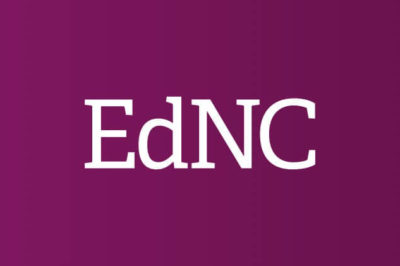

On a rainy workday in January, my wily German Shepherd, Axel, got bored and chewed a hole in my sofa. Not the size of a golf ball, or baseball, or even a football. This was more the size of a basketball. I’m now shopping for a new sofa. In the process, I have found an odd similarity to education initiatives – it is hard to find the price tag.
To continue this story, I walked into a store, saw a terrific sofa – the right fabric, the right feel, the right sectional configuration – snapped some photos and sent them with an enthusiastic text message to my partner. She responds, “Great. How much?” I text back that I don’t know. I can’t find the price. Crickets. No price. No interest.
Over the course of the last month, several strategic plans for public education in North Carolina have been released by different stakeholders.
Over the course of the last month, several strategic plans for public education in North Carolina have been released by different stakeholders. And there’s a pattern.
[Note: See John Dornan’s article today on the various legislative agendas proposed by stakeholders.]
The North Carolina School Superintendents Association announced a plan in January that provides goals and strategies related to prepared graduates, assessment, instructional delivery, digital learning, and human capital. Some of these strategies call for funding. In addition, there is a sixth goal that sets the mark that North Carolina will rank 25th nationwide in public school funding by 2025. There are no costs identified.
BEST NC – Business for Educational Success and Transformation – is seeking feedback on its draft of a proposed North Carolina Education Vision. It outlines three overarching strategies: to support students, elevate educators, and raise expectations. It also provides some detail on approaches to these strategies. There are no costs identified.
In the recent hearing held by Judge Howard Manning, Jr. in the ongoing Leandro litigation, a Department of Public Instruction representative identified the State Board’s Strategic Plan for continuing to provide a sound basic education after the conclusion of the federally-funded Race to the Top Initiative. The seventeen-page document identifies important goals for assessing progress. There are no costs identified.
These are all very good efforts. They all point to a similar direction for public education. But what about the cost? Will no price tag mean no interest? Crickets in the General Assembly translate to not including these initiatives in the budget. Crickets in the courtroom mean that the judiciary doesn’t hold the State accountable for investing sufficient resources to provide an equal opportunity to a sound, basic education.
There is one exception to this pattern. In January, the NCSU Friday Institute released its North Carolina Digital Learning Plan. It addresses initiatives related to technology infrastructure, model digital learning innovations, local educator leadership capacity, high-quality digital education resources, and regional and state support structures. It also provides the cost for each. This is extremely helpful. We can have a conversation about it. The General Assembly can debate it. The court can determine its relationship to the State’s constitutional obligation to provide sufficient instructional resources.
The good thing about starting with the plans is it keeps the focus on how the money is spent.
In considering these other good plans, perhaps the first step – prior to calculating the cost – is to ensure that a commitment to financial investment is a part of the discussion. For a playbook on this, I would go to Governor Jim Hunt’s legacy, including the passage of the bipartisan Excellent Schools Act, which raised teacher pay to the national average. In garnering support for a funding commitment, Hunt urged the Greensboro Chamber of Commerce, “if we do this, if we pass the Excellent Schools Act, if we fund it this year, and for the next four years, it is going to make an amazing difference in our schools. …I am proud that this chamber has taken this stand.” At the bill signing Hunt proclaimed, “[w]e are doing what no other state in America has done. We are forging ahead, with a common purpose and a common resolve, to put education first – and we are putting our money where our mouth is. As we sign into law the Excellent Schools Act, we are committing ourselves, heart and soul, to excellence in education.” Now that’s how to make sure the conversation includes the price tag.
The good thing about starting with the plans is it keeps the focus on how the money is spent. Perhaps that is something to which we can all agree.
So speaking of which, I found out that the terrific sofa costs $3500. Sometimes there is a reason the price isn’t readily available. I’m continuing to look for a midcentury-style sofa with dog repellent. If you have ideas, let me know.
More importantly, we need to extend the conversation of the vision of public education to include the sometimes uncomfortable issue of the cost for sustained investments.
References
Addresses and Public Papers of James Baxter Hunt Jr., Governor of North Carolina, Volume IV 1997-2001, pp. 81, 108, edited by Jan-Michael Poff and William Harris Brown, Department of Cultural Resources, Office and Archives and History, Raleigh, NC.
North Carolina Guide to Strengthening Our Public Schools: PreK-12 Public Education Strategic Plan, North Carolina School Superintendents Association, January, 2015.
Proposed North Carolina Education Vision (For Discussion), BEST NC, 2014-15.
North Carolina Digital Learning Plan: Preliminary Recommendations to Inform State Policy Decisions, NCSU Friday Institute for Educational Innovation, January, 2015.
State Board of Education Strategic Plan, November, 2014.


